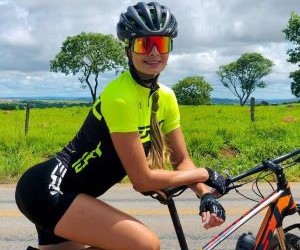Learn how to deal with punctures on long rides with prevention tips, repair techniques, and smart gear choices to keep rolling without stress.
WHAT ARE THE BEST SADDLE OPTIONS FOR LONG-DISTANCE RIDERS?
Long-distance cycling demands more than stamina; it requires equipment that prevents pain and maximizes comfort over hours on the saddle. A poor choice can lead to numbness, fatigue, and even injuries, while the right saddle transforms endurance rides into smooth experiences. This guide breaks down the most effective saddle options for endurance riders, analyzing shapes, padding, cutouts, and materials. We also explore fitting strategies and real-world testing tips that help you select the perfect match for your riding style. Whether you are preparing for a century ride, a bikepacking trip, or ultra-distance competition, understanding saddle design is crucial to unlocking both comfort and performance.

Key factors in saddle comfort
Every long-distance rider knows that the saddle is the most personal component on a bike. Comfort is not universal—what feels perfect to one cyclist may feel unbearable to another. Understanding the key factors in saddle design helps narrow down choices and avoid costly trial-and-error.
Shape and width considerations
Saddles come in varying widths and profiles, designed to match pelvic anatomy and riding posture. A wider saddle may benefit upright riders, while aggressive racers often prefer narrower, flat designs. Getting a sit bone measurement is a crucial step to ensure proper fit and pressure distribution.
Padding and material selection
Padding does not always equal comfort. Excessive foam can create pressure points on long rides, while minimal padding paired with proper fit often provides lasting relief. High-end saddles use advanced foams or gel inserts that balance support and shock absorption. Cover materials like synthetic leather or microfiber also affect breathability and durability.
Sit bone width must align with saddle design.
Flat vs. curved profiles suit different postures.
Minimal padding can outperform thick foam over time.
Material choices affect both grip and lifespan.
By focusing on these fundamentals, riders create a baseline for selecting saddles tailored to their physiology and cycling goals.
Popular saddle types for endurance
Endurance cycling saddles come in several distinct categories, each engineered for different rider needs. Exploring the pros and cons of these options helps cyclists make informed decisions without relying solely on marketing hype.
Cutout and pressure-relief saddles
Cutout saddles reduce perineal pressure and improve blood flow, making them popular among riders prone to numbness. However, cutout size and placement matter—too aggressive a design may reduce support in critical areas. Riders often need trial sessions to determine the balance between relief and stability.
Gel and foam endurance saddles
Gel padding provides immediate comfort, absorbing road buzz and vibrations. Foam saddles, on the other hand, offer consistent support over time, reducing the risk of saddle “sag” on ultra-long rides. Many modern designs combine both, layering materials for optimal performance.
Cutout designs target pressure relief zones.
Gel models excel in vibration damping.
Foam saddles prioritize consistent support.
Hybrid models blend multiple technologies.
Leather and adaptive options
Leather saddles, like Brooks models, mold to the rider’s anatomy over time, creating a custom fit. Though heavy and requiring break-in, they remain favored among touring cyclists. New adaptive designs using 3D-printed lattices now offer breathable, lightweight solutions with personalized cushioning patterns.
Exploring these categories enables cyclists to match saddle technology with their endurance goals, ensuring long rides are driven by energy, not discomfort.
Testing and fine-tuning your saddle
Even the best saddle choice can fail if not tested and adjusted properly. Fine-tuning ensures that comfort lasts not just for short commutes but across multi-hour or multi-day endurance rides.
Positioning and adjustments
Saddle tilt, height, and fore-aft placement all influence how weight is distributed. A small adjustment of just a few millimeters can make the difference between smooth riding and chronic discomfort. Riders should start with a level saddle and make micro-adjustments while keeping track of sensations on long rides.
Real-world testing strategies
Testing saddles in controlled conditions often fails to replicate endurance fatigue. Riders should commit to at least a few extended rides with a new saddle before making a final judgment. Many bike shops now offer demo programs where cyclists can test high-end saddles for weeks before purchase.
Adjust height and tilt gradually.
Record comfort levels over long rides.
Use demo programs to test before buying.
Pair adjustments with quality cycling shorts.
Ultimately, saddle selection is not a one-time decision but an ongoing process of refinement. As your body adapts and riding style evolves, periodic reassessment ensures that your saddle continues to serve long-term endurance goals. The result is not just pain-free cycling but a platform for better performance, consistency, and enjoyment across every mile.
YOU MAY ALSO BE INTERESTED






